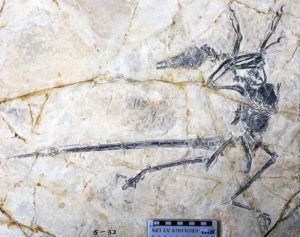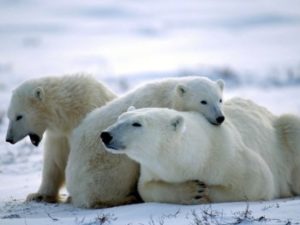by Michael Gresko, July 11, 2019 in NationalGeographic
…
The find—described today in the journal Current Biology—is the fourth Microraptor fossil to preserve stomach contents, but it’s the first to show that Microraptor ate lizards. Previous fossils captured it eating small mammals, fish, or birds. The specimen also reveals that, like some predatory birds today, Microraptor had a taste for swallowing lizards whole and head-first.
…

This fossil of the feathered dinosaur Microraptor also preserves the animal’s last meal: a lizard it seems to have swallowed whole and head first.
PHOTOGRAPH BY XUWEI YIN
by Pielke et al., 2016 in PhysicsToday
To date, most reporting on climate has focused on the possibility of catastrophic warming due to carbon dioxide and other greenhouse gases released into the atmosphere. The assessment of climate change risk has essentially been distilled to a single metric: the global average surface temperature. That reality was evident at the 2015 United Nations Climate Change Conference in Paris, where the central negotiating point was whether the global temperature rise should be limited to 1.5 °C or 2 °C. Indeed, a 2016 opinion piece by Simon Lewis (University College London and the University of Leeds, UK) states that, “by endorsing a limit of 1.5 °C, the [Paris] climate negotiations have effectively defined what society considers dangerous.”
But the reality of humans’ impact on climate is exceedingly complex.2 Even if greenhouse gas emissions could be elimi- nated completely, other harmful anthropogenic sources of cli- mate change would remain. And even if global average tem- peratures were contained, human impacts on climate would manifest in other potentially dangerous ways.
One often overlooked human factor is land use. Deforestation, dry land farming, irrigated agriculture, overgrazing, and other alterations to the natural landscape can disrupt Earth’s natural balances and change weather patterns. As with the addition of CO2into the atmosphere, the effects can last for decades or longer and affect regions distant from the original offense. Given continued rapid population growth, they threaten to be irreversible.
…
by Susan J. Crockford, July 11, 2019 in ClimateChangeDispatch
This essay explains in simple terms why so many people still believe that polar bears are in peril when nothing could be further from the truth; it is an essential lesson that shatters the basis of the shameful indoctrination of young school children and undermines the baseless claims of activist protestors.
It was written and translated into French for a special climate change feature issue (July) of the monthly French magazine Valeurs Actuelles (reviewed here) and reprinted by the French hunting magazine Chasses Internationales.
It has also been translated into German for a dedicated climate change issue (11 July) of the Swiss weekly magazine Die Weltwoche.
I have added a couple of figures to illustrate this English version of the essay.
…
…

La géologie, une science plus que passionnante … et diverse


